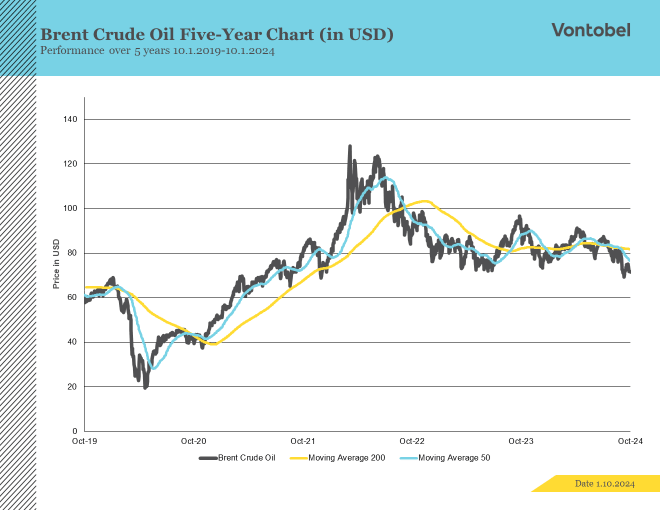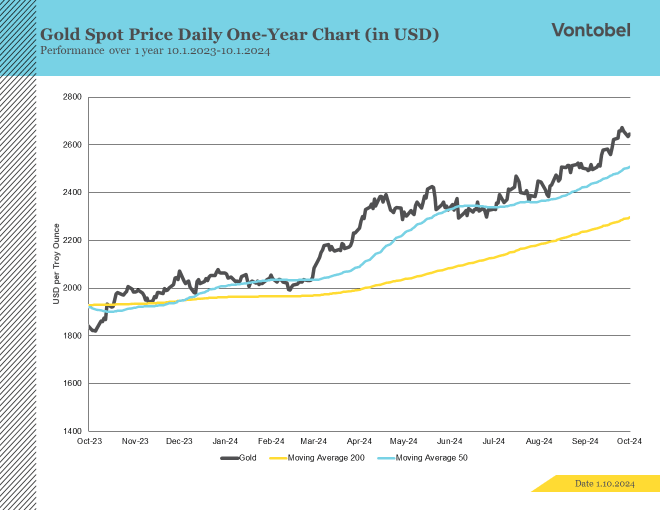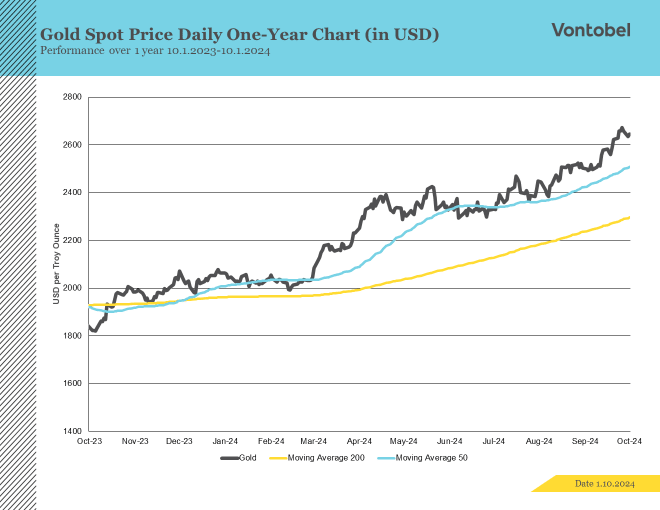Gold and Oil: Adapting to a Fast-Changing Market

A lot has unfolded in the past few weeks, including concerns about the Organization of the Petroleum Exporting Countries (OPEC) potentially abandoning its price target and increasing output. Significant interest rate cuts by the Federal reserve (Fed), along with stimulus packages from the People’s Bank of China (PBoC), have come amidst low inflation and rising geopolitical tensions.
History of OPEC
OPEC was established in the 1960s by five founding member countries (Saudi Arabia, Iran, Iraq, Kuwait, and Venezuela) with the goal of stabilizing oil prices in the world. Throughout the years, countries have both left and joined, leading to a current membership of twelve countries. According to OPEC, they possess 4/5 of the world’s oil resources while only producing 2/5 of the world’s oil. In recent decades, OPEC has participated in multiple price wars over oil, with the common outcome being that it generally does not work in their favor. A known flaw in their “cartel” is the freedom given to each member to produce at their own discretion without repercussions, which has led members to act against its guidelines. In 2014, OPEC increased its oil production in response to the growing market share of the US. Consequently, oil prices tumbled from $100/barrel to $30/barrel at their lowest point as supply outpaced demand. In the aftermath, OPEC was unsuccessful, as the US remained resilient; technology in oil extraction had improved, allowing companies to survive even at lower prices. OPEC ultimately agreed to cut production, as it had become evident that continuing the course would further hurt its members.


Why Now?
But why would OPEC be interested in increasing production volumes again? The simple answer is that, as it maintained its course, the US quietly emerged and obtained greater market share. According to Saudi Arabia, one of the founding members of OPEC, they have enough alternative funding to withstand lower oil prices. Thus, in order not to fall behind, OPEC is planning to increase supply, which will lead to an oversupply in the market and push prices further down.
What Is the Effect?
On a national level, countries importing oil will benefit more than exporting countries. With advancements in oil extraction technology, the US became a net exporter of oil as of 2023, making it vulnerable to a reduction in prices. However, for OPEC, oil is by far the most important income stream, with Saudi Arabia being the largest oil exporter in the world. Historically, OPEC has more to lose by engaging in a full-scale price war with the West. However, this doesn't rule out the possibility that they might increase production volumes to test the market's reaction. Moreover, Iran, an OPEC member, launched a missile strike on Israel, which has heightened tensions in the Middle East and raised fears of an escalation of the conflict. In the context of the oil market, an escalation could result in supply disruptions, which caused a surge in oil prices following the attack.
On the demand side, China is the world’s major oil importer, and its recent economic struggles have raised concerns about future demand for oil. However, China recently released a stimulus package to get the economy back on track. Given the positive response from the market, with Chinese stocks having their best week since the 2008 stimulus package, the market seems optimistic that the world’s largest oil importer will continue to maintain high economic activity. Consequently, oil prices have remained fairly stable despite fears of oversupply by OPEC, as demand expectations have increased. The future of oil prices remains uncertain, making it crucial to monitor OPEC's production levels, the longevity of the PBoC's stimulus package, and escalating geopolitical tensions to gain insight into the market's direction.
Gold
Gold continues to have a strong year, reaching new highs in September, trading above both the 50- and 200-day moving averages. Demand is a key driver of the recent surge, as a weakening dollar, interest rate cuts, and inflation concerns contribute to increased demand. It is important to note that gold is a dollar-denominated asset, meaning that a decrease in the dollar makes gold more affordable. The outlook for the USD is uncertain, as investors are cautious about trading the dollar before the outcome of the upcoming presidential election is known. However, some critics argue that it is irrelevant who eventually becomes the 60th president of the US, as the budget deficit remains too profound for a single presidential term to cure.


Moreover, even though the evidence is not conclusive, it is believed that historically an inverse relationship between gold and interest rates exists, which could be observed during the recent interest rate cuts by both the Fed and the PBoC. However, recent interest rate hikes have not stopped gold from performing well, which highlights that the relationship is far from absolute. During 2022’s interest rate hikes, gold remained stable, as other competing forces, such as geopolitical tensions and inflation, created demand for gold as a hedge. It becomes clear that the factors driving gold prices result from the combined influence of various market forces, rather than being dictated by a single, isolated factor. For the future of gold prices, heightened geopolitical tensions, interest rate cuts, and a USD that investors are steering away from as we approach the 60th presidential election provide opportunities for both short- and long-term investors.
Risks
Credit risk of the issuer:
Investors in the products are exposed to the risk that the Issuer or the Guarantor may not be able to meet its obligations under the products. A total loss of the invested capital is possible. The products are not subject to any deposit protection.
Currency risk:
If the product currency differs from the currency of the underlying asset, the value of a product will also depend on the exchange rate between the respective currencies. As a result, the value of a product can fluctuate significantly.
External author:
This information is in the sole responsibility of the guest author and does not necessarily represent the opinion of Bank Vontobel Europe AG or any other company of the Vontobel Group. The further development of the index or a company as well as its share price depends on a large number of company-, group- and sector-specific as well as economic factors. When forming his investment decision, each investor must take into account the risk of price losses. Please note that investing in these products will not generate ongoing income.
The products are not capital protected, in the worst case a total loss of the invested capital is possible. In the event of insolvency of the issuer and the guarantor, the investor bears the risk of a total loss of his investment. In any case, investors should note that past performance and / or analysts' opinions are no adequate indicator of future performance. The performance of the underlyings depends on a variety of economic, entrepreneurial and political factors that should be taken into account in the formation of a market expectation.
Market risk:
The value of the products can fall significantly below the purchase price due to changes in market factors, especially if the value of the underlying asset falls. The products are not capital-protected
Product costs:
Product and possible financing costs reduce the value of the products.
Risk with leverage products:
Due to the leverage effect, there is an increased risk of loss (risk of total loss) with leverage products, e.g. Bull & Bear Certificates, Warrants and Mini Futures.
Disclaimer:
This information is neither an investment advice nor an investment or investment strategy recommendation, but advertisement. The complete information on the trading products (securities) mentioned herein, in particular the structure and risks associated with an investment, are described in the base prospectus, together with any supplements, as well as the final terms. The base prospectus and final terms constitute the solely binding sales documents for the securities and are available under the product links. It is recommended that potential investors read these documents before making any investment decision. The documents and the key information document are published on the website of the issuer, Vontobel Financial Products GmbH, Bockenheimer Landstrasse 24, 60323 Frankfurt am Main, Germany, on prospectus.vontobel.com and are available from the issuer free of charge. The approval of the prospectus should not be understood as an endorsement of the securities. The securities are products that are not simple and may be difficult to understand. This information includes or relates to figures of past performance. Past performance is not a reliable indicator of future performance.
© Bank Vontobel Europe AG and/or its affiliates. All rights reserved.
